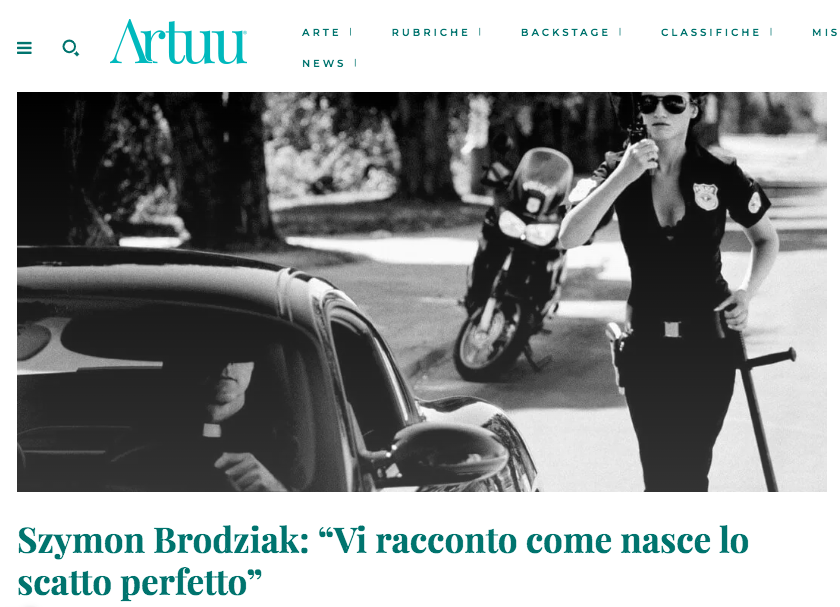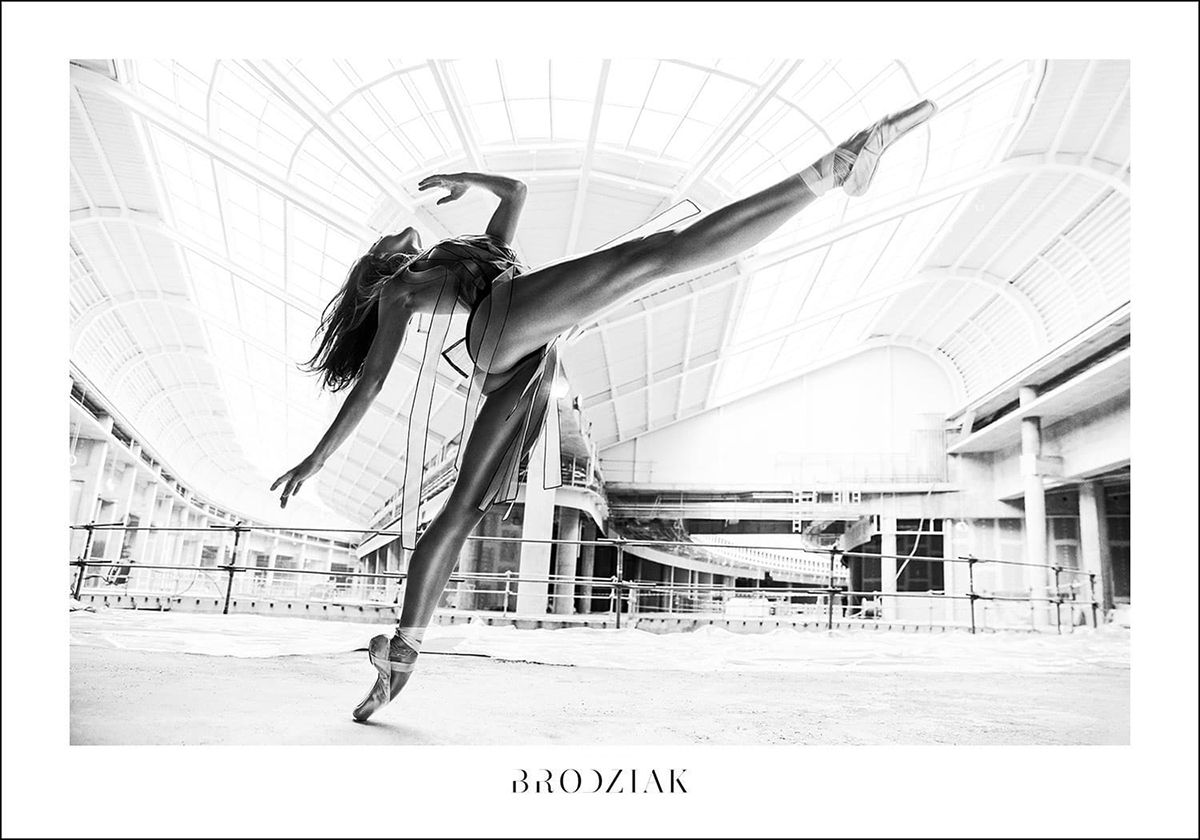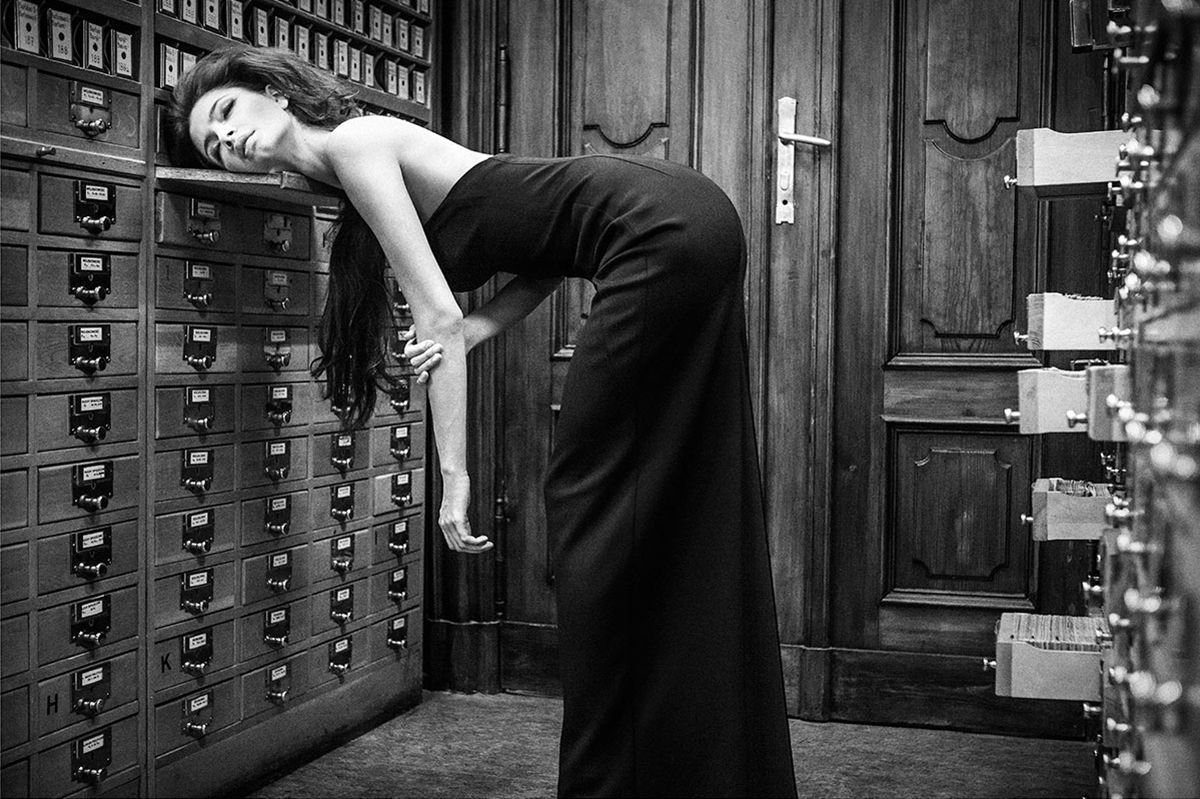Interview with Italian Artuu
17 January 2024


Szymon Brodziak is one of the most outstanding representatives of contemporary photography. Born in Poland in 1979, in 2015 he exhibited his photos at the Helmut Newton Foundation Museum of Photography in Berlin, and in 2016 he was awarded by the jury the international photography prize in Paris as the best advertising photographer and as the best black-and-white campaign photographer advertising by Fashion TV. Today, a huge selection of works - over 40 - can be seen until the end of January at Galleria Vik Milan, at the exhibition "You are what you see". Szymon Brodziak is a master in conveying women's sensuality through his delicate vision and extremely cultured and original language.
In the interview we publish below, Brodziak tells, exclusively for Artu readers, his professional path, the motivations behind his work and his point of view on the relationship between new technologies and "traditional" photography.
How did you get into photography, what is your study path?
It all started with my fascination with the beauty of my girlfriend and now wife, Anna, who is my greatest muse and friend, as well as my model. We met in high school: at that time I wasn't sure what direction I would take in my professional career, I didn't even know what I wanted to study, but deep in my heart I knew that I wanted to capture the beauty of my Anna, that's why I used photography as a language, as a form expression.
I was an uneducated amateur, with no experience, driven by pure passion, will and determination to take photos. I then went to university to study economics, which is a bit boring and certainly not as glamorous as art, but it has proven very useful in my adult life, helping me consciously develop my personal brand


When do you know you've taken the perfect photo?
For me, the perfect shot is the one I would like to hang on the wall, the one I would like to surround myself with every day to make my world more beautiful.
How did your professional breakthrough in photography come about?
It was 2006, and I met with Porsche's marketing director to talk about how to create a report describing the customer driving experience. In short, a normal professional task. However, during the meeting I decided to take the risk. I told the director: "ok, I can do a reportage for you, but I know many other good photographers who do it even better than me. I have my black and white portfolio here and that's what I do best. I would like to think with you about a calendar with Porsche cars for the coming years. He thought for a moment and replied: "ok, you have two weeks to present the project to me, then I will make a decision." After two intensive weeks of preparing the concept, I returned to him and received permission to create the calendar. Someone trusted me and it was great! It was my first major order for a large brand and thus the 2007 Porsche calendar was born.


Can you tell me an anecdote about something that happened while creating the Porsche Calendar?
I created 12 different sets for the Calendar. One of them was a situation in which a priest driving a Porsche was stopped by a police patrol for speed control. My exemplary muse, Anna, played the role of a policewoman. We rented a special motorcycle for this occasion, and she, dressed as a real policewoman, was heading towards the car. In the last shot, the entire face of the man in the car is not visible because it is covered by an umbrella, but we can see that he is wearing the characteristic priest's outfit. The inspiration for the painting was a media scandal at the time, in which one of the Polish bishops actually bought a Porsche to drive. The photo is surreal and reminds us of this story that seems unbelievable, but is a true story. I like to be inspired by the places I choose for my scenography, as well as facts taken from real life.
How technically do you create your shots?
I like to go beyond beauty and reality, that's why I don't shoot reports. I know my camera as a part of my body and I don't have to think about the technical side of it because I just want to capture what is inside me and in front of me. I'm not interested in lamps and complicated configurations. I am more interested in the relationship between the model and the photographer, and the entire context around which I build the image. I don't go into technical details, I focus on what is most important in photography and art: evoking emotions. Can you tell me an anecdote about something that happened while creating the Porsche Calendar?
Who are the photographers who contributed to your artistic development?
I am inspired by two great absolute masters who also had this cinematic spirit in their photographs. For me, Helmut Newton is the greatest master of all time, I did not have the opportunity to meet him, but I had the honor of meeting his wife June Newton, who invited me to an exhibition of my photos in Berlin, at the Temple of Photography, Helmut Newton Foundation Museum. It was like my dreams came true, it was the greatest recognition and honor for me.
The second person who helped me a lot in finding my path and style was Peter Lindbergh, also an extremely talented and fantastic photographer, who showed me how to capture the sensuality of a woman.
So on the one hand there is Helmut Newton, scandalous, sharp and provocative, and on the other there is Peter Lindbergh, between them there is like a thin and emotional thread, and I try to combine these two styles and make it my feature, create another story, another chapter of photography , another universe. I also really like the work of Paolo Roversi, he's fantastic too, and of course Richard Avedon.


What is your vision for photography?
Every photo I take is a frame from a movie that was never made. I like to create an idea, an impression that is part of a larger story and in this way I invite the viewer to look at the photograph and imagine "his" vision of the story of what is happening or could have happened before the photo was taken. I think that photography is captivating, fascinating and this is my way of thinking about creating: not only capturing the beauty of the model, beauty is just the beginning. The most important thing is what you do with it, how you construct your story to expand and stimulate the audience's imagination.


Photography has undergone great changes over the last thirty years, from analog to digital, to the emergence of artificial intelligence also in image creation. What's your opinion on the subject? How do you see the future of photography?
Artificial intelligence is something really new that intrigues me. I was lucky to start my entire adventure with analog photography and an analog camera, I spent thousands of hours in a dark room developing my photos. Then came digital and everyone from artists started using digital cameras, then the smartphone revolution happened along with the Internet and social media which further revolutionized photography. Now anyone can become a photographer and everyone always has a camera with them, so the competition has increased a hundredfold.
What's important is what's in your heart. I think that artificial intelligence can be an extraordinary new tool for expressing your art, your creativity in an even more accurate, even bolder and more spectacular way. I'm not that pessimistic when it comes to artificial intelligence. I think photography will go to another level that we as creators will need. This can be a great opportunity for us to really express ourselves. Sometimes I was frustrated a hundred times because I had something in mind, a vision that I couldn't realize because it was too dangerous or too expensive: for example, if I wanted to put a model with angel wings on top of the iPhone tower, now I can probably do it done in a few hours, working with artificial intelligence. It's something extraordinary, it's important to capture something real, I want to create my worlds, my imagination, convey real emotions, restore the impression of real photography, as if I took it with an analog camera.
interviewed by: Paola Fiorido / Artuu


